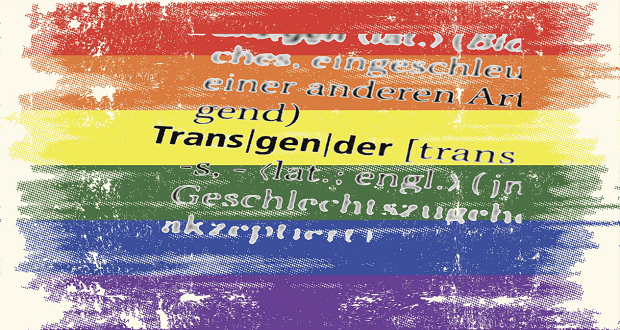 Technology pervades every aspect of D&I work from talent sourcing to learning modalities to virtual and remote workspaces to the introduction of robots that think and emote and compete with humans for jobs.
Technology pervades every aspect of D&I work from talent sourcing to learning modalities to virtual and remote workspaces to the introduction of robots that think and emote and compete with humans for jobs.
Talent Sourcing
One of the most evident areas of technology is talent sourcing. Gone are the days of applicants applying for jobs via paper resumes. Almost 100% of sourcing has some online element from resume posting sites to social media networking sources. Social media networking sites have made it easier to find out a lot more about an applicant than just his/her job skills. They learn about their interests, values and even past discretions before a decision to pursue the candidate. We don’t know yet all of the potential diversity and inclusion ramifications of cyber-recruiting. There are some potential drawbacks:
- Recruiter bias can be intensified if there are hidden or not so hidden biases about outside interests of the candidate that may not impact the candidate’s ability to do the job.
- If the candidate chooses not to include his/her picture on an social media site, where most do, it could raise suspicions on the part of the recruiter who decides to move on to the next candidate who displays a picture because it is easier.
- The access to literally millions of applications to fill potentially any job, has apparently not helped the issue of sourcing people of color. I continue to hear the exasperation of my clients that “we could not find any people of color”. The internet should not be a total substitute for sources such as civil rights groups, advocacy organizations and employee referrals.
On the other side of the coin, the internet allows prospective job seekers to know a lot more about your company. They can research your diversity and inclusion record, dig into your values and, from sources like Vault, hear what employees say about the company. Any issue can go viral in a matter of seconds influencing millions of people about the integrity of your company, its people and products.
Social Media Networking
The increase in these communication platforms provide for more opportunity for meaningful diversity and inclusion discussions and also more opportunity for offensive or insensitive communications. Advertising and marketing messages are now happening via YouTube, Facebook, Twitter, LinkedIn Pinterest and others. D&I practitioners need to understand how their organizations are using social media networking—the types of images and the content of messages. D&I practitioners should be at the tables where protocols and standards are being established for this fast moving area.
Big Data
The advent of “big data”, a term used to describe data sets with sizes beyond the ability of commonly used software tools to capture, curate, manage, and process the data, allow for quantum advances in analytic capabilities. The ability to combine massive sets of different kinds of HR data allow for new kinds of questions that could not previously have been answered. Big data only achieves its full potential when this information is analyzed, interpreted, reported and used to enhance people decisions. Big data has great potential for HR and D&I practitioners to conduct all sorts of predictive and correlational analysis. However, the caution is that those doing the interpretation will need to have the skill to understand the cultural nuances that may be driving the results.
Business Colonies
Futurist Thomas Frey predicts that rather than workplaces there will be business colonies. To fulfill project needs, companies will assemble the requisite talent for projects that could be as short as several hours to a year. Colonies may be virtual or physical or a combination.
Frey predicts people in the colony will work to complete a project, send the finished product back and wait for the next incoming project. He says, this is a more free form way of work and will be uncomfortable for many people who are used to being able to map out a career path.
There are many D&I implications here including:
- How will you ensure inclusion in team selection?
- How will you manage team conflict?
- How will performance be measured and what are the cultural considerations?
- In environments where currently the same people tend to get tapped for choice assignments, will this bias be exacerbated by business colonies?
As teams work more virtually, the issue of cultural competence becomes ever more paramount. Some say biases will diminish because often team members will not see who they are working with and therefore less opportunity for hidden biases to be at play. However, different languages, accents, ways of work will have monumental implications for team effectiveness and productivity.
The Digital Divide
The vast digital divide that existed between people of color and whites that existed in 2000 has shown dramatic improvement. According to Pew Research by 2011, 66% of Whites had broadband internet access in the home compared to 49% of Blacks and 51% of Hispanics. However Blacks and Hispanics are just as likely as Whites to have mobile devices and use them for more functions than Whites.
The divide still persists in schools. Ninety percent of schools today have computers with Internet access, however the computers are often too old to be compatible with current software. Students in poorer and largely schools comprised of students of color have less access to up to date technology.
A significant divide also still exists for people with disabilities. Fifty-four percent of adults living with a disability in the US use the internet, compared with 81% of adults without a disability.
From a global perspective the US ranks 12th in internet access and 14th for broadband penetration.
According to a report by the World Economic Forum (WEF) and Insead conducted in 2012, the digital divide is worsening globally, especially in BRIC and developing areas such as Africa. For example, Africa lacks the infrastructure and skills to catch up with the fast pace of technology, even though Africa will account for 19% of the world’s population by 2030.
The report ranked countries by “Networked Readiness” index. The US was #8, China #51, Russian Federation #56, Brazil #65, and India #69.
Diversity, Inclusion and Innovation
Global leaders agree that diversity drives innovation. Forbes Insights conducted a study in 2011 that concluded diversity is a driver of innovation. The majority of leaders surveyed for the study indicated that diverse experiences, perspectives and backgrounds are critical for innovation. The hyper-connected nature of the global business landscape today, afforded by technology, makes it possible to easily bring together wide reaching diversity in virtual venues. However, other studies show that if leaders are not culturally competent the potential for innovation will likely not be optimized. Leaders of the future will need to have deep understanding of differences and how to create environments, both physical and virtual where diversity becomes an asset and does not hinder performance. More than 75% of respondents in the Forbes study said their companies are looking to focus more on leveraging diversity for innovation over the next three years. D&I practitioners will have to understand and coach leaders on ways to use diversity to maximize the innovation potential of their teams
Robotics
Author of Robotic Nation, Marshall Brain says that next year there will be 1.2 million robots worldwide, one robot for every 5,000 people. We see the increase of the use of automation in just about every profession, even lawyers are being replaced by technology! Software has been designed to review legal documents in a fraction of the time that humans can perform the same tasks.
Robots that can express emotion are currently being tested.
Technology is also being developed that allows scientists to insert chips into the human brain for enhanced performance. What will happen when workers who have brain chips work next to those who do not? This will bring a whole new set of diversity issues to consider. While this may seem very far-fetched and not feasible in the foreseeable future, it is not that far off.
Implications and Recommendations for D&I Practitioners:
- It is imperative to stay current with technology and how it impacts how we work, with whom we work and the new opportunities it creates to either include or exclude.
- Talent sourcing has been completely revolutionized by the internet. D&I practitioners need to be aware of emerging practices that might inadvertently exclude certain groups.
- The use of social media networking to communicate, market and establish relationships is moving at lightning speed and has the potential to increase opportunities to make diversity faux pas which could damage your organization’s reputation.
- D&I practitioners much understand the dynamics of virtual teams and support their organizations in ensuring team members receive sufficient cultural competence education.
- As part of your corporate social responsibility (CSR) efforts, you may want to engage in efforts to decrease the lingering digital divide.



















Great topic and analysis Mary-Frances. I am finding there is education necessary on both sides. The diverse candidates sometime are not packaging themselves to be found in social media networks and depending on their non-diverse relationships so need access to career development in our now virtual world. Companies are partnering with the wrong groups just to check the box and not digging deeper to use the right resources to find the most desirable talent in the most demanding fields. Relationships and employee referrals still rule where exclusion rears its head most. Our firm is called on when organizations are serious about becoming strategic about diversity recruiting and building an employer of choice.